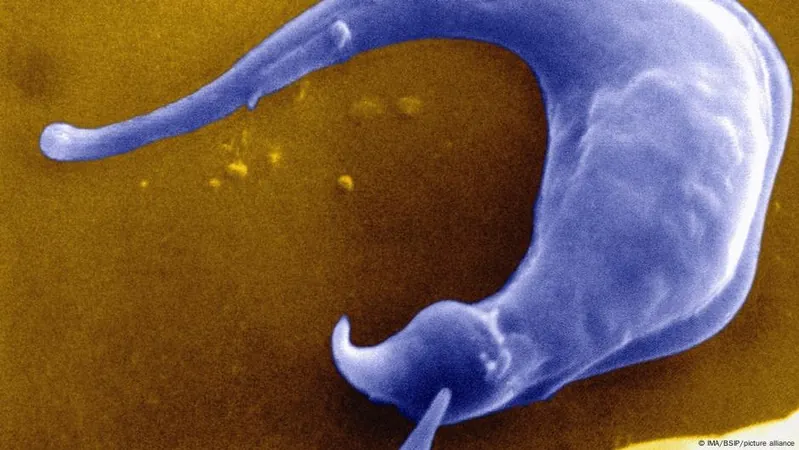
Blood As Colorful As the Sea: 8 Fascinating Animals with Non-Red Blood
2025-09-13
Author: Jessica Wong
Discover the Spectrum of Life Underwater
While we often picture red blood coursing through veins, many creatures flaunt shades of blue, green, and even colorless blood! These stunning variations in blood color are a testament to evolution's creative ways of adapting to diverse environments. Let’s dive into the intriguing world of eight remarkable animals with non-red blood.
1. Horseshoe Crabs: The Blue-Blooded Marvels
Horseshoe crabs are known for their striking blue blood, which owes its hue to haemocyanin—a copper-based molecule that binds oxygen. This unique adaptation is particularly effective in cold, low-oxygen aquatic habitats, making them a vital component of marine ecosystems.
2. Skinks: Nature's Green Blooded Reptiles
Meet the skinks of New Guinea, belonging to the genus Prasinohaema. These fascinating lizards boast vibrant green blood, a result of high levels of biliverdin, a green bile pigment. This accumulation masks the red from hemoglobin, giving them a unique and eye-catching appearance.
3. Peanut Worms: Shades of Purple in the Deep
In the underwater world, peanut worms (or Sipunculids) shine with purple blood, thanks to hemerythrin—a respiratory pigment that turns violet-pink when oxygenated. Strikingly, their deoxygenated form is nearly colorless, creating a colorful contrast in their marine habitat.
4. Sea Cucumbers: Unassuming with a Yellow Twist
Some sea cucumbers possess yellowish blood due to a vanadium-based pigment called vanabin. While it may not contribute significantly to oxygen transport, it certainly adds a splash of color to the ocean floor.
5. Crocodile Icefish: The Colorless Wonder of Antarctica
Living in the frigid waters of Antarctica, crocodile icefish have evolved to have almost no hemoglobin, resulting in blood that is nearly colorless. Instead of relying on hemoglobin, they dissolve oxygen directly into their plasma, thriving in their icy habitat.
6. Octopuses: Masters of Adaptation with Blue Blood
Octopuses, with their mesmerizing blue blood, utilize haemocyanin to transport oxygen, similar to horseshoe crabs. This adaptation is shared by many mollusks and crustaceans, demonstrating the adaptive strategies of ocean life.
7. Sea Worms: A Greeneish Revelation
Certain marine worms, particularly certain polychaetes, utilize chlorocruorin, an iron-based pigment similar to hemoglobin, which gives their blood a greenish tint when diluted. This captivating characteristic highlights the diversity of life in the sea.
Exploring Biodiversity: A Kaleidoscope of Blood Colors
These animals are not just bizarre curiosities; they play critical roles in their ecosystems. Understanding their unique blood compositions provides invaluable insights into evolution and adaptation. From blue to green to colorless, the ocean holds a vibrant palette of life waiting to be explored!



 Brasil (PT)
Brasil (PT)
 Canada (EN)
Canada (EN)
 Chile (ES)
Chile (ES)
 Česko (CS)
Česko (CS)
 대한민국 (KO)
대한민국 (KO)
 España (ES)
España (ES)
 France (FR)
France (FR)
 Hong Kong (EN)
Hong Kong (EN)
 Italia (IT)
Italia (IT)
 日本 (JA)
日本 (JA)
 Magyarország (HU)
Magyarország (HU)
 Norge (NO)
Norge (NO)
 Polska (PL)
Polska (PL)
 Schweiz (DE)
Schweiz (DE)
 Singapore (EN)
Singapore (EN)
 Sverige (SV)
Sverige (SV)
 Suomi (FI)
Suomi (FI)
 Türkiye (TR)
Türkiye (TR)
 الإمارات العربية المتحدة (AR)
الإمارات العربية المتحدة (AR)